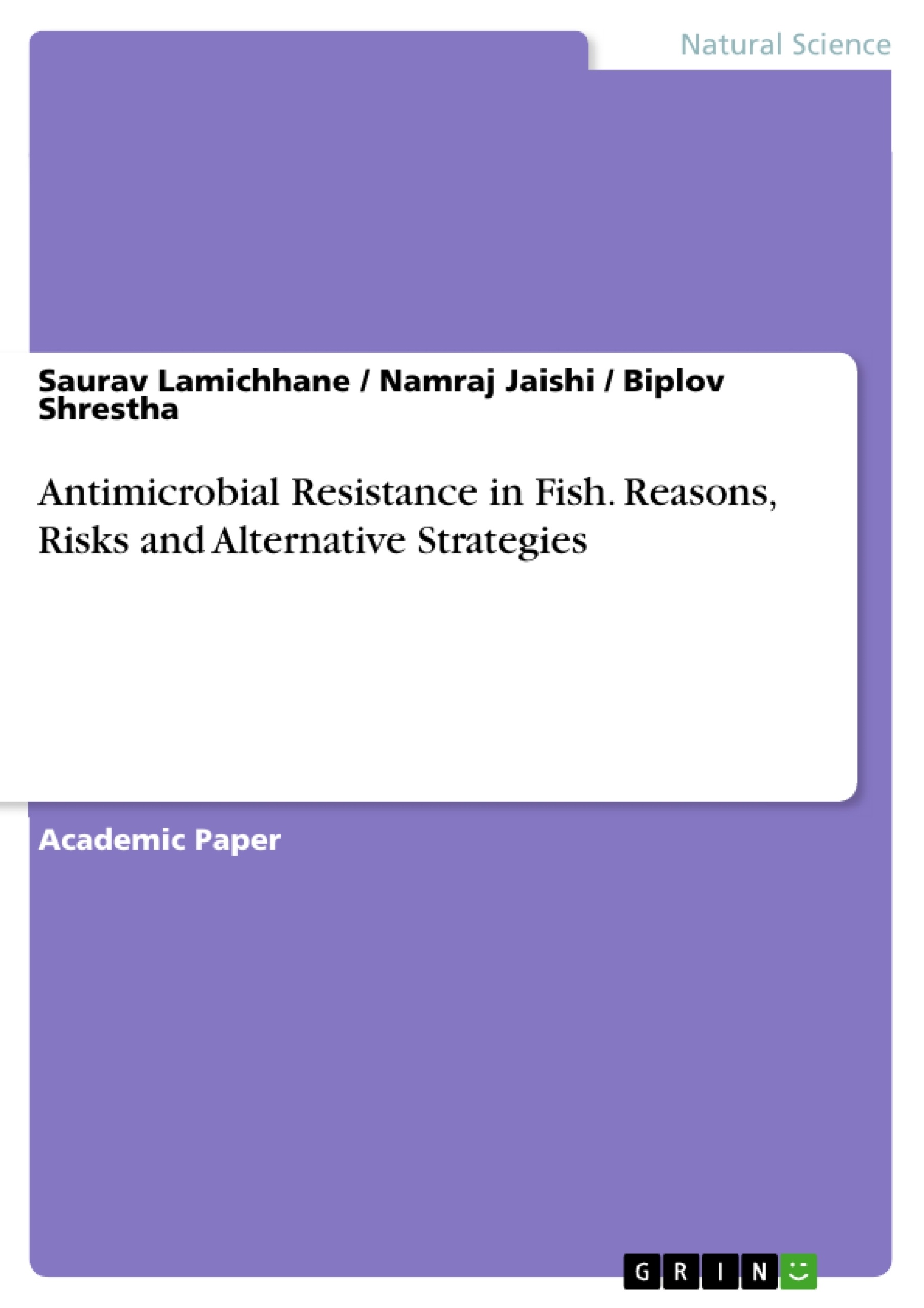This text deals with the antimicrobial resistance in fish as a result of its use in aquaculture, the development and spread of this resistance and the risk associated with the antimicrobial resistant in fish culture.
Antimicrobial resistance arises due to the overuse of antimicrobial drugs, most prominently antibiotics and others like antivirals, antifungals, etc. An antibiotic is a substance produced by one microorganism that selectively inhibits the growth of another microorganism and there are different types of it. Its use in aquaculture is accompanied by various factors and increasing use of it has several impacts.
As of now, the aquaculture sector is growing rapidly and currently, it accounts for more than half of the fish used for human consumption. Demand for food has been increased since the population of the world is growing rapidly so, dependent on aquaculture to provide a safe, reliable, and economic supply of aquatic food has also increased. This increase in production has been accompanied by the intensive use of antibiotics in the aquaculture industry which is leading to the production of antimicrobial-resistant pathogens.
Inhaltsverzeichnis (Table of Contents)
- Introduction
- Antimicrobial agents use in aquaculture
- Development and spread of antimicrobial resistance
- Risk Associated with Antimicrobial Resistant in Fish culture
- Management and alternative strategies
- Conclusion
Zielsetzung und Themenschwerpunkte (Objectives and Key Themes)
This review aims to provide an overview of the current status of antimicrobial resistance (AMR) in fish, explore the development of AMR in fish culture, and discuss management strategies to combat the spread of AMR. The review examines the use of antimicrobial agents in aquaculture, the development and spread of AMR, the risks associated with AMR in fish culture, and management and alternative strategies to address the issue.
- Antimicrobial resistance in fish and its development
- The role of antimicrobial agents in aquaculture
- The impact of AMR on human and animal health
- Management and control of AMR in fish
- Alternative strategies to reduce the use of antimicrobials
Zusammenfassung der Kapitel (Chapter Summaries)
- Introduction: This chapter provides a general introduction to the topic of antimicrobial resistance, highlighting the importance of responsible antibiotic use in aquaculture due to its rapid growth and its role in providing food security.
- Antimicrobial agents use in aquaculture: This chapter explores the various factors contributing to the use of antimicrobials in aquaculture and the consequences of their overuse, emphasizing the global trend of antibiotic use in fish farming and the potential risks it poses.
- Development and spread of antimicrobial resistance: This chapter delves into the mechanisms of antimicrobial resistance development, particularly focusing on how bacteria transfer resistant genes to future generations and through horizontal gene transfer. It also discusses the significant threats posed by AMR to animal and human health, highlighting the limitations it imposes on therapeutic options.
- Risk Associated with Antimicrobial Resistant in Fish culture: This chapter explores the potential negative impact of antimicrobial overuse in aquaculture, not only on animal and human health, but also on the aquatic environment.
- Management and alternative strategies: This chapter examines various approaches to managing and reducing the spread of AMR in fish culture, outlining potential strategies to mitigate this growing concern. It suggests alternative methods to antibiotics, such as vaccination and improved hygiene, to address the challenge of antimicrobial resistance.
Schlüsselwörter (Keywords)
The key keywords and focus topics of this text include antimicrobial resistance, aquaculture, antibiotic use, fish pathogens, zoonotic infections, horizontal gene transfer, management strategies, and alternative approaches. The review emphasizes the significant challenges posed by antimicrobial resistance in fish culture, particularly the implications for human and animal health, and explores potential solutions to mitigate this threat.
- Citar trabajo
- Saurav Lamichhane (Autor), Namraj Jaishi (Autor), Biplov Shrestha (Autor), 2021, Antimicrobial Resistance in Fish. Reasons, Risks and Alternative Strategies, Múnich, GRIN Verlag, https://www.grin.com/document/1061075



